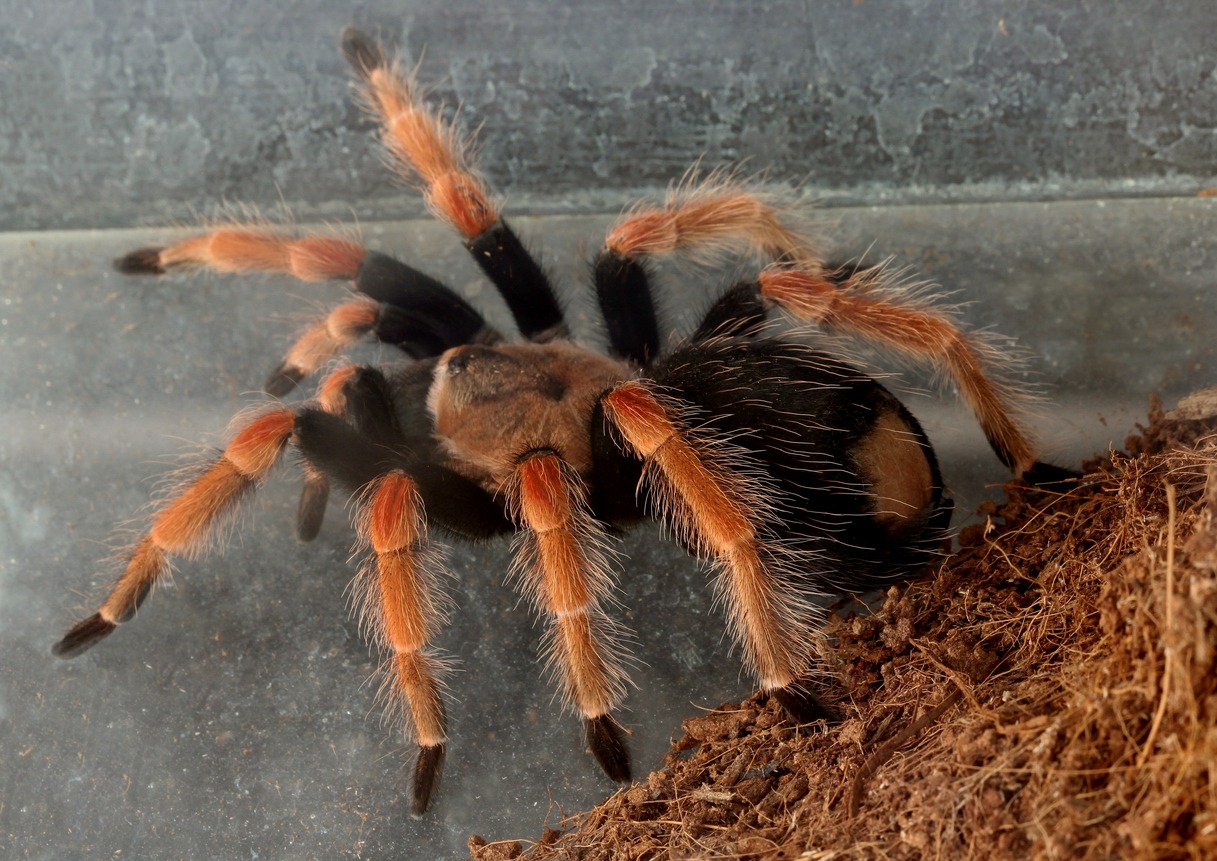The Mexican Redleg Tarantula, also referred to as Red-legged Tarantula and Brachypelma emilia, is a terrestrial tarantula that closely resembles a Mexican Redknee Tarantula. Just like the latter, it is a docile tarantula that is popular in the pet trade. This tarantula species is touted to be best for beginners because of its forgiving nature and easy temperament. If you are interested in petting one, here are some facts that you should know about the Mexican Redleg Tarantula!
History
The high popularity has historically led to increasing levels of collecting for the pet trade. Thus, the Mexican Redleg Tarantula is now placed on CITES Appendix II in 1994, therefore restricting trade. However, despite this restriction, there are still many wild-caught Mexican Redleg Tarantulas that are being smuggled out of Mexico.
In the wild, they can be seen in a variety of habitats—from coastal forests to tropical areas inland. Mexican Redleg Tarantulas are found throughout western Mexico, particularly in the west of the Sierra Madres Occidental mountain range. They are fossorial species, meaning they are burrowers. Typical burrows usually extend to between 20 cm and a meter in length, and may have “chambers” to store skins and leftover food.
Characteristics of a Mexican Redleg Tarantula
Average life span: Males live up to five years while females can live up to 30 years
Average size: Leg span is around 5 to 6 inches
Average weight: 16 grams
This tarantula species has a dark-colored body with a pink, orange, or red second joint of its legs. Its carapace is a light color with a prominent black triangle at the front. An adult female Mexican Redleg Tarantula is 65 mm long, possessing a leg span of 12.5 cm.
Mexican Redleg Tarantulas are considered as one of the most docile tarantulas in the pet trade, which is why their popularity is no question among spider keepers. They seldom bite, but keep in mind that their bites are mildly toxic, leading to swelling and allergic reactions. Like other tarantulas, they have urticating hairs or hairs that they can flick and throw anytime if they feel threatened. These hairs can cause pain, inflammation, rashes, and once they hit the eyes, it may cause severe complications.
Caring for a Mexican Redleg Tarantula
The Mexican Redleg Tarantula is an undemanding arachnid species, making it relatively easy to care of. They don’t need socialization, but with their docile demeanor, they can tolerate gentle handling. When handling a spider, do so by sitting on the floor, because an accidental fall can cause severe injuries to your pet.
An enclosure that measures 8” x 10” or” 5- to 10-gallon is good enough for an adult species. Keep in mind that the width should be twice or thrice the spider’s length, and the enclosure’s length should be three times its leg span. Mexican Redleg Tarantulas are not fond of climbing, so a height around a foot should work fine. Secure the top of a tank with an escape-proof, securely-fitting screen top for airflow.
As a burrower, your Mexican Redleg Tarantula will require a thick substrate. Provide 4 to 6 inches of chemical-free soil, peat moss, or vermiculite as bedding of your enclosure. Add visual elements such as a half hollow log, cork bark, pieces of wood, and other materials that can serve as a hideout for your spider pet.
Keeping the humidity levels at an adequate level is essential. Use a hygrometer and set the humidity level between 60% to 70%. A shallow water dish filled with clean water shall help with retaining the environment’s humidity level. However, should you need to raise humidity, you can mist the enclosure with clean water from a spray bottle. Maintaining tank temperature is equally important, too. Place it around 75 to 85 degrees Fahrenheit. Create a thermal gradient in the enclosure, with one side warmer than the rest of the area. You can achieve this by placing a heat mat or ceramic heat emitter that’s around 85 degrees Fahrenheit on one side of the enclosure.
As for the Mexican Redleg Tarantula’s, it mainly consists of live crickets. However, this spider will also take waxworms, mealworms, roaches, and various insects as aliment. You can also occasionally feed your pet with pinkie mice. Keep in mind that the food should always be smaller than your pet’s body.

